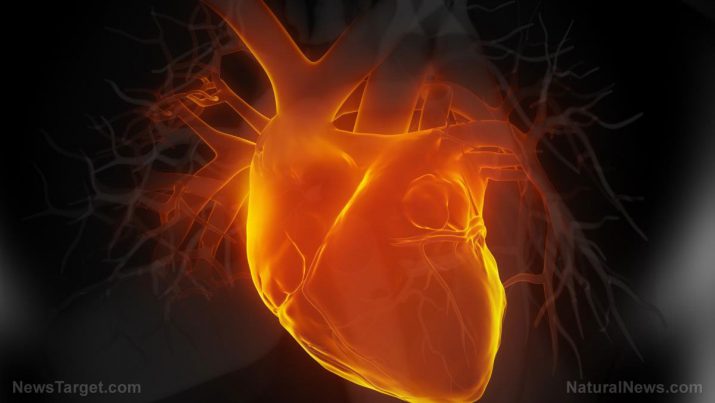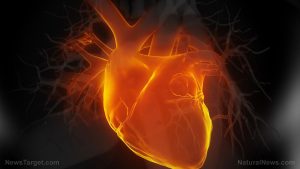
Aortic Aneurysm – causes, side effects and treatments at NaturalPedia.com
Thursday, December 21, 2017 by Zoey Sky
http://www.naturalpedia.com/aortic-aneurysm-causes-side-effects-and-treatments-at-naturalpedia-com.html

An aortic aneurysm, also called an abdominal aortic aneurysm (AAA), occurs when the pressure of blood inside the artery causes weak areas in the artery’s wall to balloon outward. When left untreated, an aneurysm may rupture and this can cause pain and internal bleeding.
Aneurysms can develop anywhere along the aorta. Three-fourths of aortic aneurysms develop in the part that passes through the abdomen (abdominal aorta), and the rest develop in the part that passes through the chest (thoracic aorta).
In the elderly, aneurysms often occur in areas where arteries branch (e.g. where the abdominal aorta branches into the iliac arteries) or in areas of stress (e.g. in the popliteal artery. Aneurysms can be round (saccular) or tubelike (fusiform). Most aneurysms are fusiform. Atherosclerosis, which weakens the wall of the aorta, is the most common cause of aortic aneurysms.

Known side effects of an aortic aneurysm
The symptoms of an aortic aneurysm aren’t always obvious, and some are often noticed during screening or tests carried out for another reason. These symptoms can include:
- A pulsing sensation in the stomach similar to a heartbeat.
- Constant stomach pain.
- Lower back pain that doesn’t go away.
People at a higher risk of getting an aortic aneurysm include:
- Men 65 or over – Aortic aneurysms are at least six times more common in men than women, and the risk of getting one goes up as you age.
- Smokers — You are at least 15 times more likely to get an aortic aneurysm if you’re a smoker.
- People with high blood pressure – High blood pressure can double your risk of getting an aortic aneurysm.
- Those with relatives with an aortic aneurysm – People are at least four times more likely to get an aortic aneurysm if a close relative has had one.
Body systems harmed by an aortic aneurysm
If an aortic aneurysm bursts, it can cause:
- Sudden, severe pain in the stomach or lower back
- Dizziness
- Sweaty, pale, and clammy skin
- A fast heartbeat
- Shortness of breath
- Fainting
Food items or nutrients that may prevent an aortic aneurysm
While quitting smoking is the best way to prevent an aneurysm from forming, several changes in your diet may also prevent aortic aneurysms:
- Minimize or eliminate meat consumption
- Eat plenty of nuts
- Increase your fruit and vegetable intake
Treatments, management plans for an aortic aneurysm
Small aneurysms are often treated with beta-blockers, a type of medication for high blood pressure. However, routine tests are needed to keep the aneurysm’s progression in check. Large aneurysms or those that grow rapidly require surgery, which includes:
- Open surgery — Involves the removal of the damaged portion of the aorta, which is replaced with a synthetic tube called a graft.
- Endovascular surgery — Involves running a small catheter into the aorta via an artery in the leg, which is then used to deliver a stent into the aneurysm to reduce blood pressure on the artery.
- Emergency surgery — This kind of surgery is very risky, and patients are more likely to experience complications.
Where to learn more
- 4 no-brainer ways to prevent dementia
- Candida – Proof of The Gap Between Science and Modern Medicine
- Genetic Screening No Use in Predicting Heart Attack Risk
- The mind-blowing criminal racket of the FDA: hiding prescription dangers from the public so the politically connected elite can make millions
- Regular sauna sessions decrease risk of deadly heart disease by over half
Summary
An aortic aneurysm, also called an abdominal aortic aneurysm (AAA), occurs when the pressure of blood inside the artery causes weak areas in the artery’s wall to balloon outward. When left untreated, an aneurysm may rupture and this can cause pain and internal bleeding.
Small aneurysms are often treated with beta-blockers, a type of medication for high blood pressure. However, routine tests are needed to keep the aneurysm’s progression in check. Large aneurysms or those that grow rapidly require surgery.
Sources include
Tagged Under: Tags: aortic aneurysm





